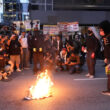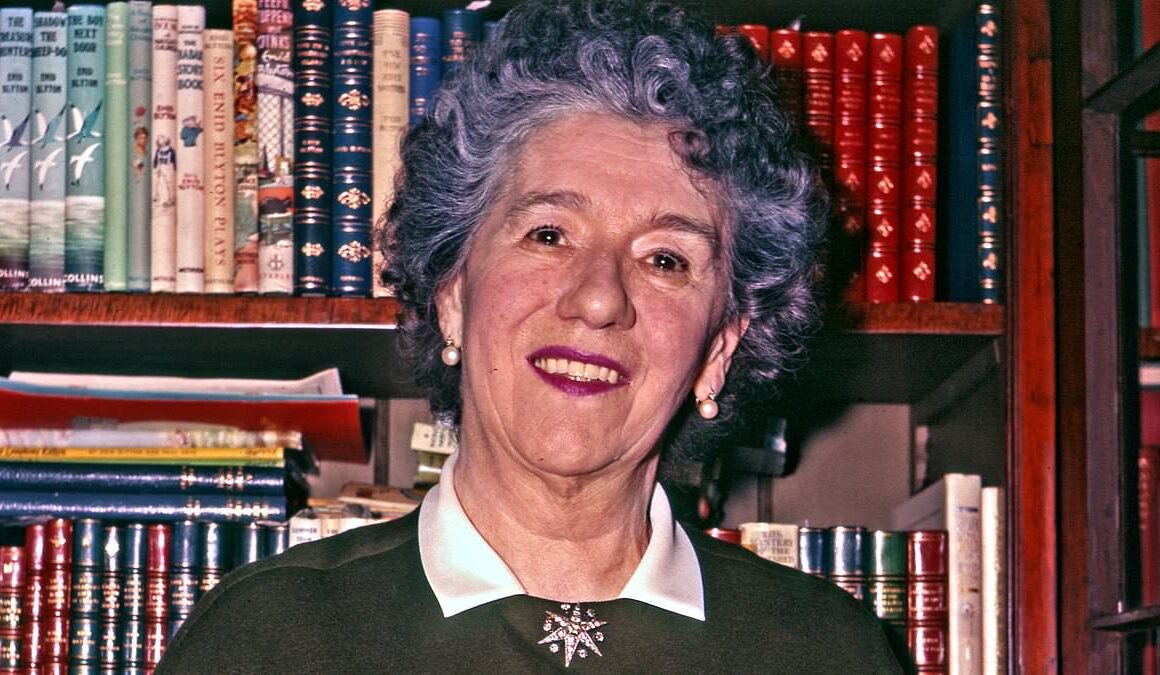Enid Blyton (1897-1968) was a beloved British children’s author, best known for her series such as The Famous Five, The Secret Seven and The Faraway Tree.
Her books, characterised by adventure, mystery and strong moral themes, have sold millions of copies worldwide and been translated into numerous languages.
The casual reader may not be aware of just how prolific she was. According to The Enid Blyton Society, she published a staggering 185 novels/novelettes, 292 ‘character’ books (which contained 858 short stories), 1,008 short story series books (containing 8,183 short stories), 283 ‘education’ books (containing 1,287 short stories) and 386 ‘recreation’ books (containing 1,857 short stories).
This is not to mention the hundreds of poems and plays that were also in these volumes.
Precisely how many short stories she wrote is debated. Some stories share a title, and others were used more than once.

Enid Blyton was the world’s most prolific short story writer, with a staggering 185 novels/novelettes, 292 ‘character’ books (which contained 858 short stories), 1,008 short story series books (containing 8,183 short stories), 283 ‘education’ books (containing 1,287 short stories) and 386 ‘recreation’ books (containing 1,857 short stories) to her name

Blyton’s books, characterised by adventure, mystery and strong moral themes, have sold millions of copies worldwide and been translated into numerous languages. Pictured: The author with a puppet of her character, Noddy
The society has calculated that of the 13,695 short stories, plays and poems published, there are 8,076 unique titles. No one else even comes close.
Janet Ryder, Oxford
QUESTION: Which was the first flying boat?
A flying boat is an aircraft designed to take off and land on water, where the fuselage of the aircraft is shaped like a boat and is the principal source of buoyancy.
Additional floats may be fitted under the wings to provide lateral stability when floating on the water.

A flying boat is an aircraft designed to take off and land on water, where the fuselage of the aircraft is shaped like a boat and is the principal source of buoyancy. Pictured: The US Navy Martin PBM-3R Mariner transport aircraft
Alternatively, stability may be provided by sponsons projecting from each side of the fuselage.
Sponsons are also generally shaped to provide lift when flying.
The first successful flying boat was designed in 1912 by a Frenchman, Francois Denhaut, who built the Donnet-Leveque.
Initially, the underside of the fuselage was flat-bottomed, which created suction, preventing the aircraft taking off.
This problem was solved by putting an indentation — a ‘step’ — in the underside of the hull. This has been a feature of flying boats and ‘floatplanes’ ever since.
A floatplane differs from a flying boat in that buoyancy is provided by floats positioned below the fuselage on struts.
The first floatplane was also built by a Frenchman, Henri Fabre.
It was an unusual tail-first design and used three floats: one at the front and two side by side at the rear. Despite not having steps on the floats, it took off and flew in 1910.
For later floatplanes of more conventional design, the usual arrangement has been two floats positioned far enough apart to provide lateral stability as well as buoyancy, or a single large float directly below the fuselage with two smaller floats farther out.
Floatplanes can be made by simply adding floats to a conventional land-based aircraft.
Flying boats, however, must be designed from scratch with a boat-shaped fuselage.
Denis Sharp, Littlehampton, West Sussex
QUESTION: Why was the Phoenician Empire considered to be the most peaceful?
The Phoenicians are known for their seafaring, trading and colonising activities across the eastern Mediterranean from around 1500 BC to 300 BC.
The Phoenicians did not establish a unified empire through military conquest, similar to the Roman or Persian Empires.
Instead, they created a network of independent city-states, such as Tyre, Sidon and Byblos, located along the coast of what is now Lebanon and parts of Syria and Israel.
These city-states shared a common culture and language but operated independently of one another.

The Phoenicians are known for their seafaring, trading and colonising activities across the eastern Mediterranean from around 1500 BC to 300 BC. Pictured: Remains of the Phoenician city of Carthage, located in modern day Tunis
From this area, Phoenicia sent forth pioneering seafarers, skilled engineers, gifted artisans and entrepreneurs.
Through a peaceful, long-distance network exchanging goods and ideas, they influenced the trade, communication and development of civilisation across the Mediterranean basin.
They traded goods including purple dye, glass and timber.
An ancient form of commerce was ‘dumb’ or ‘silent’ trading. One party would land on a beach, say, and leave a variety of goods that they wished to trade.
The local tribe would view the goods and leave gold — or whatever they wanted to trade — in exchange.
Instead of engaging in military conquest, the Phoenicians spread their influence by trade.
They also disseminated their alphabet, which became the basis for Greek and, therefore, Latin scripts.
It can even be argued that Phoenician mercantilism ultimately prompted the formation of European states across the Aegean, Italy and Spain.
Lawrence King, New Mills, Derbyshire







